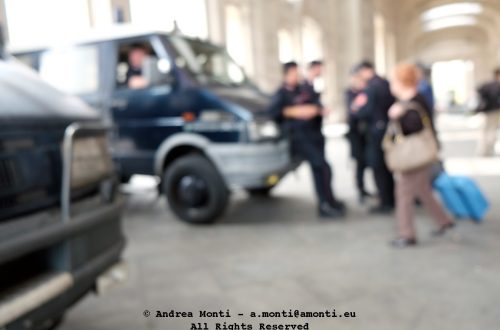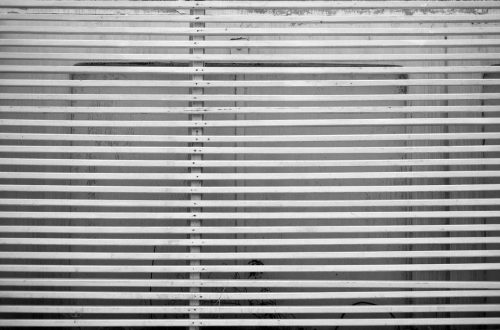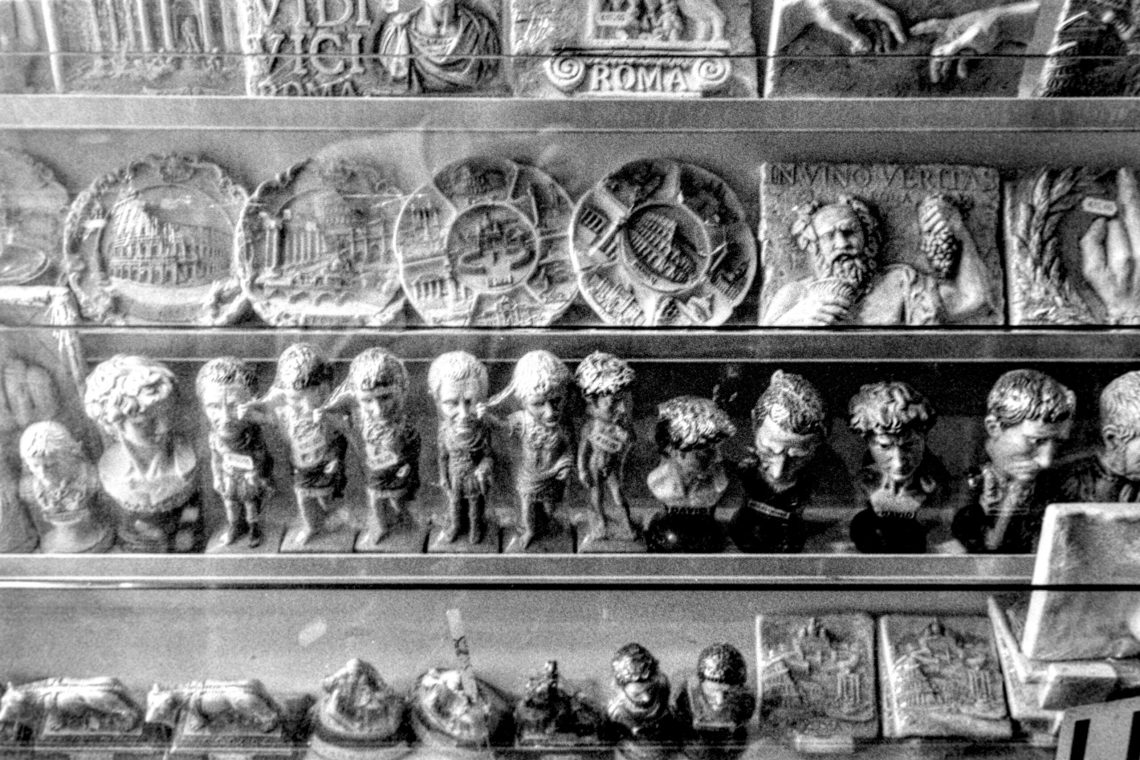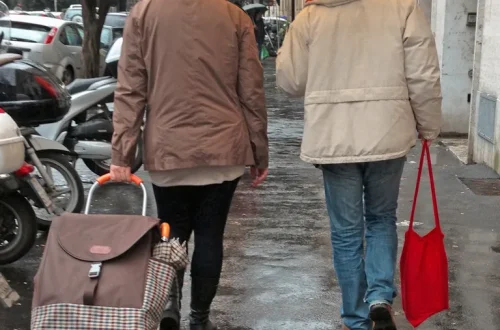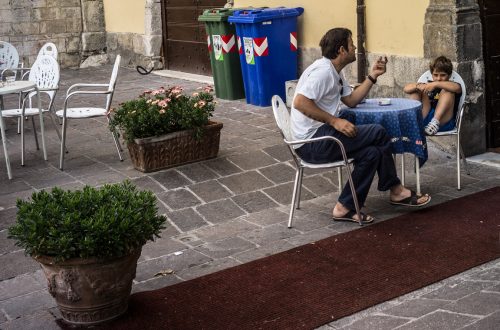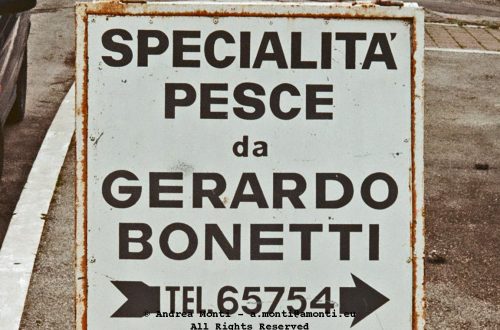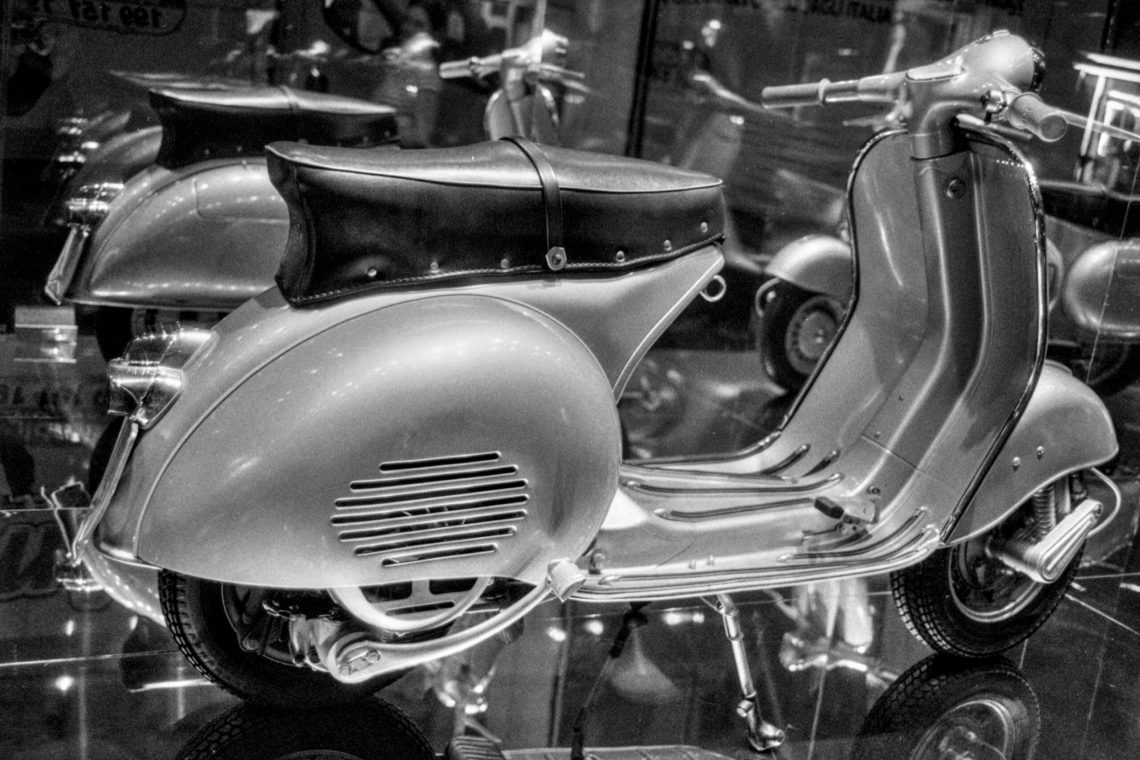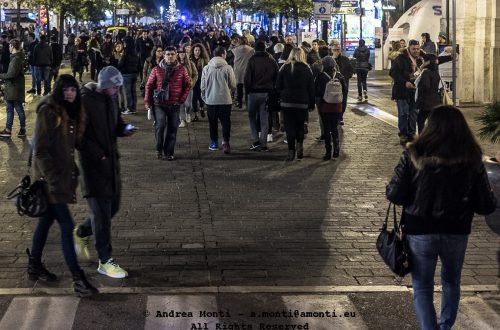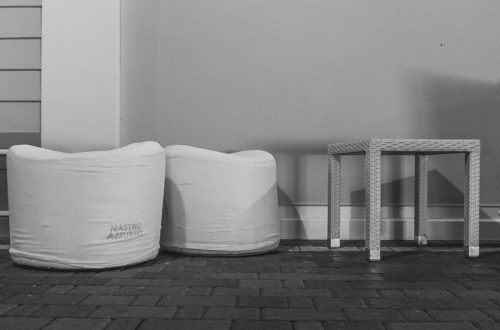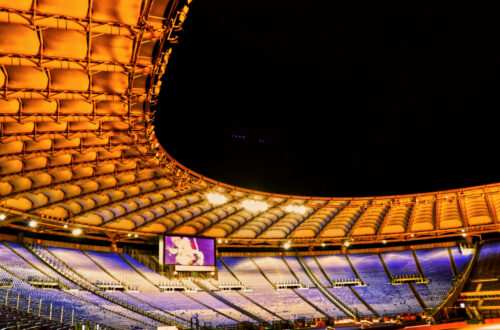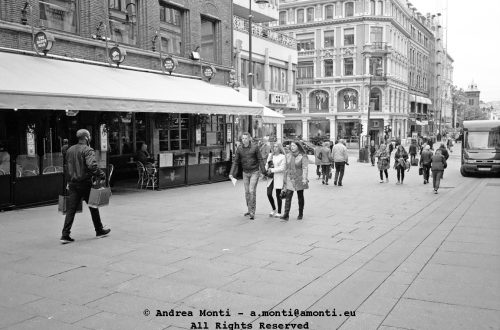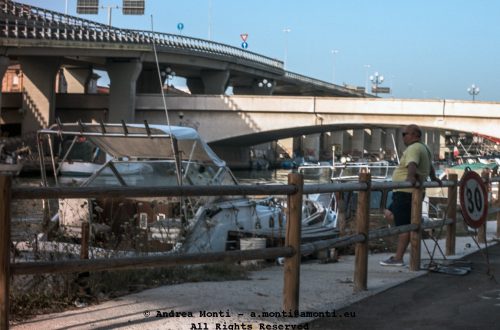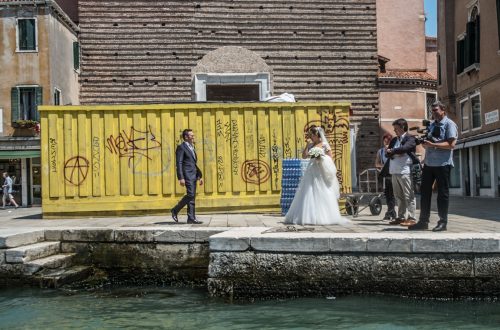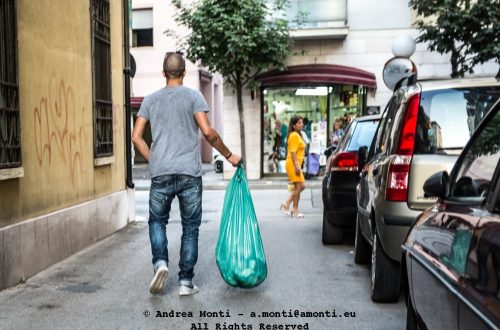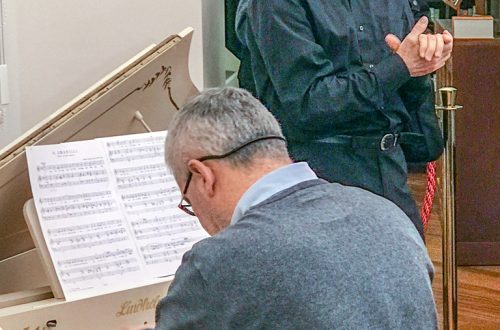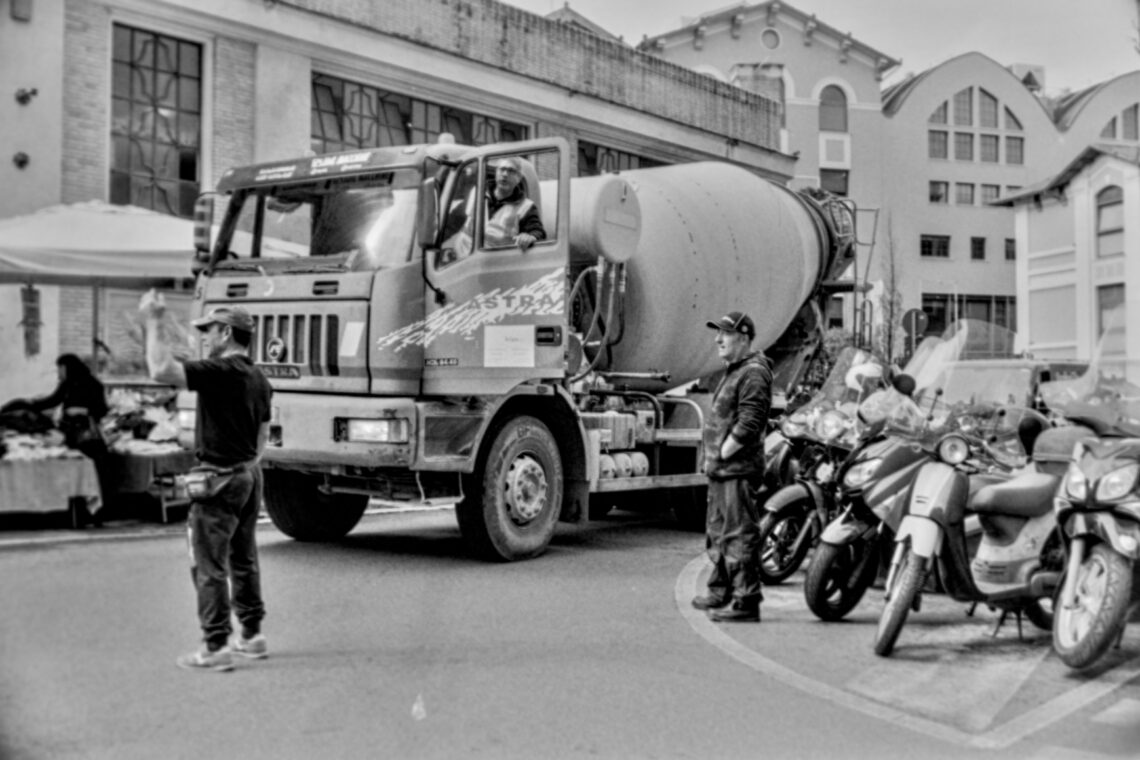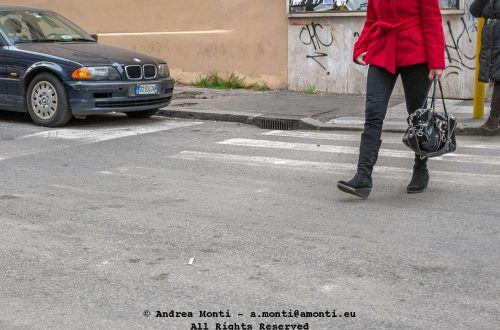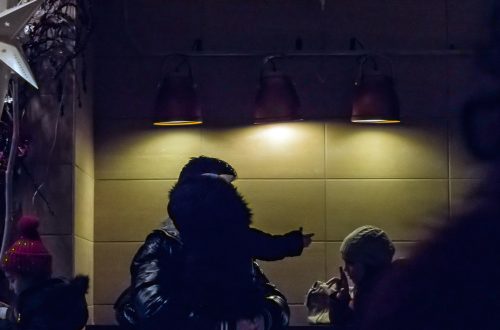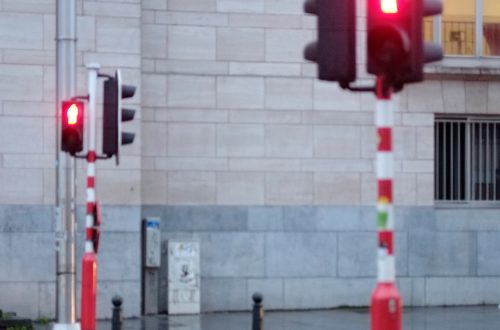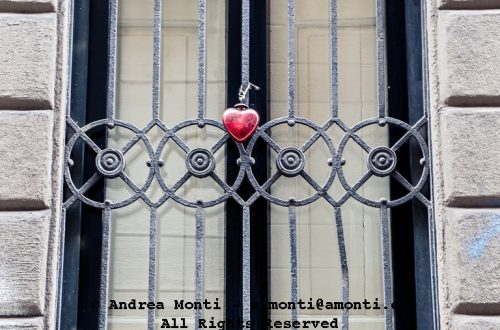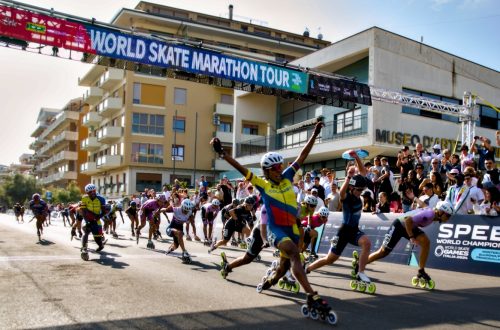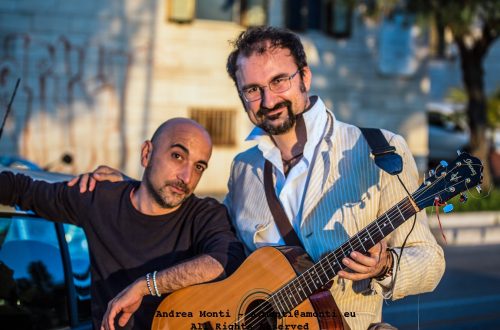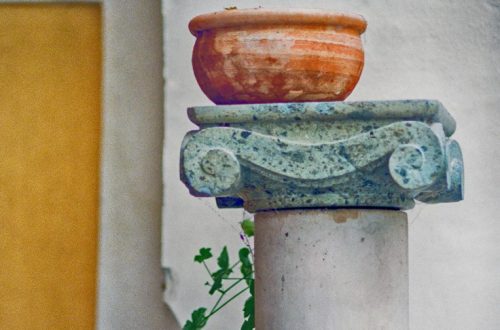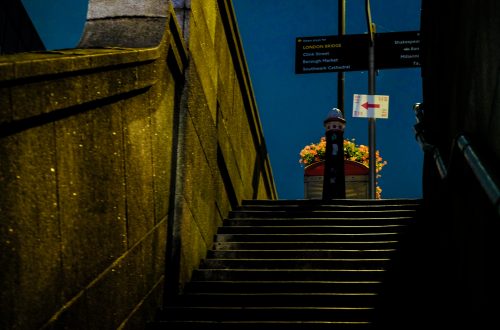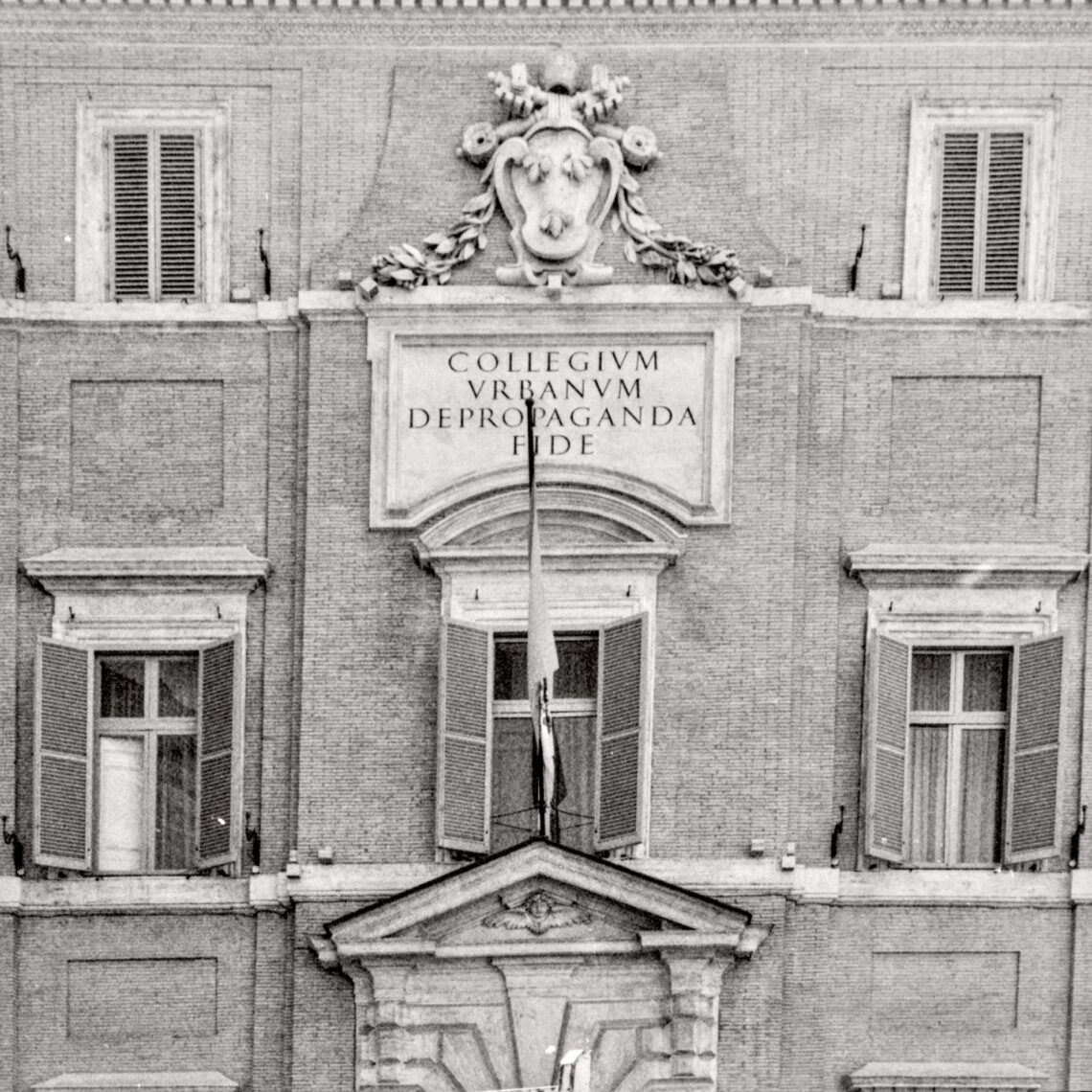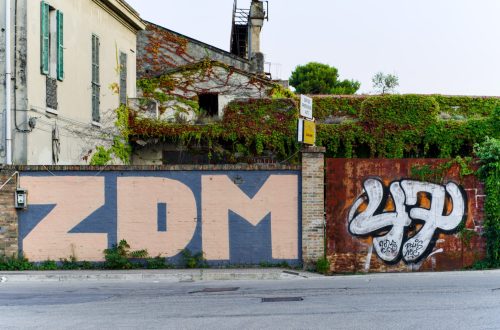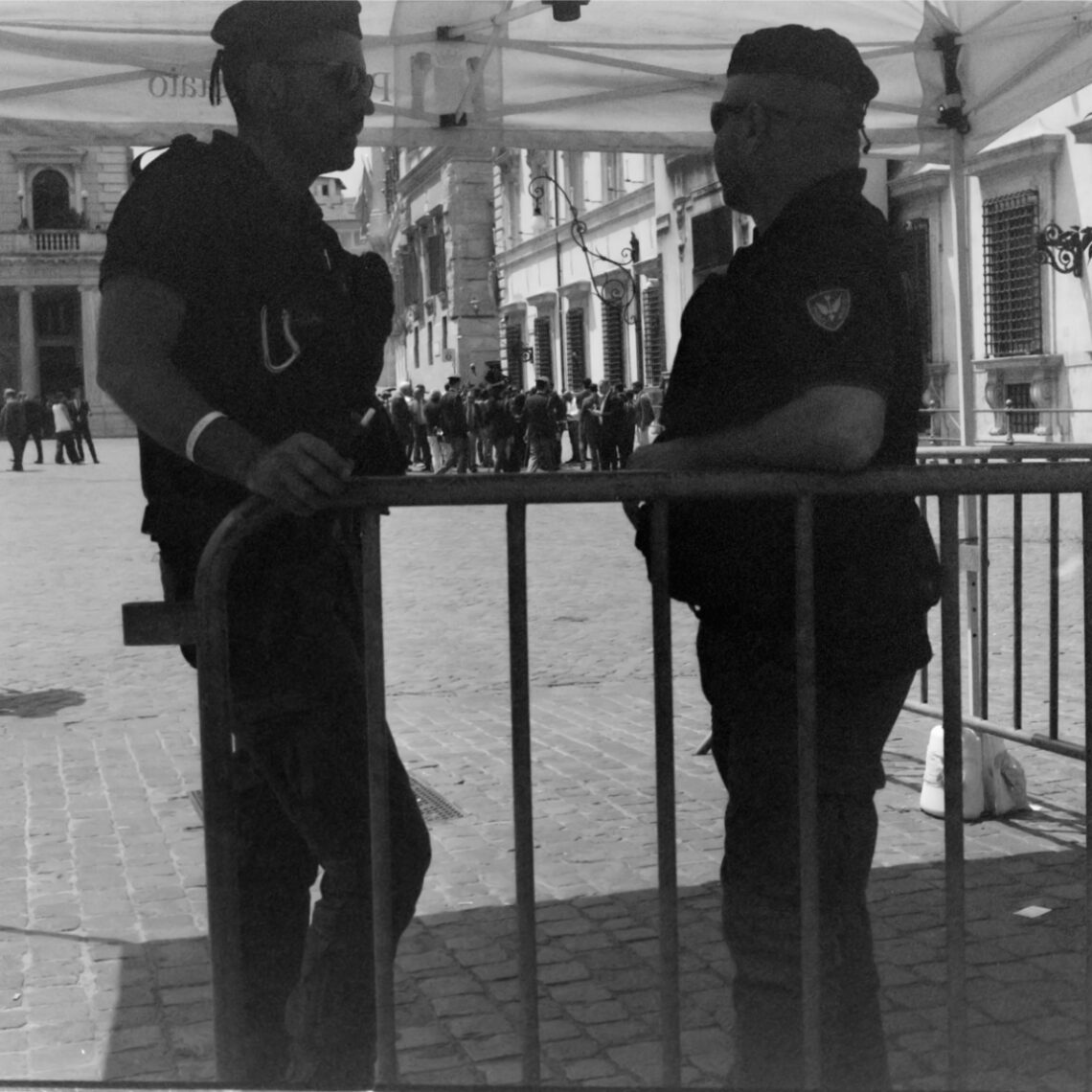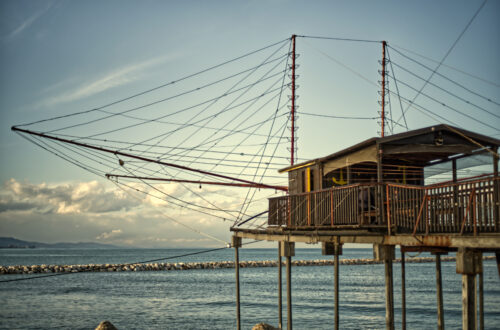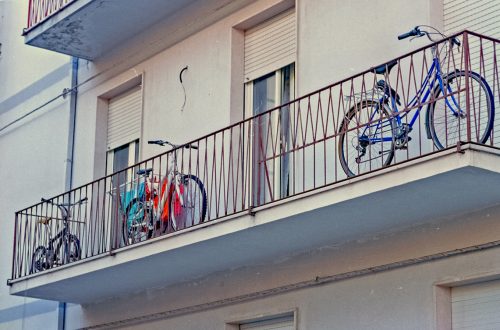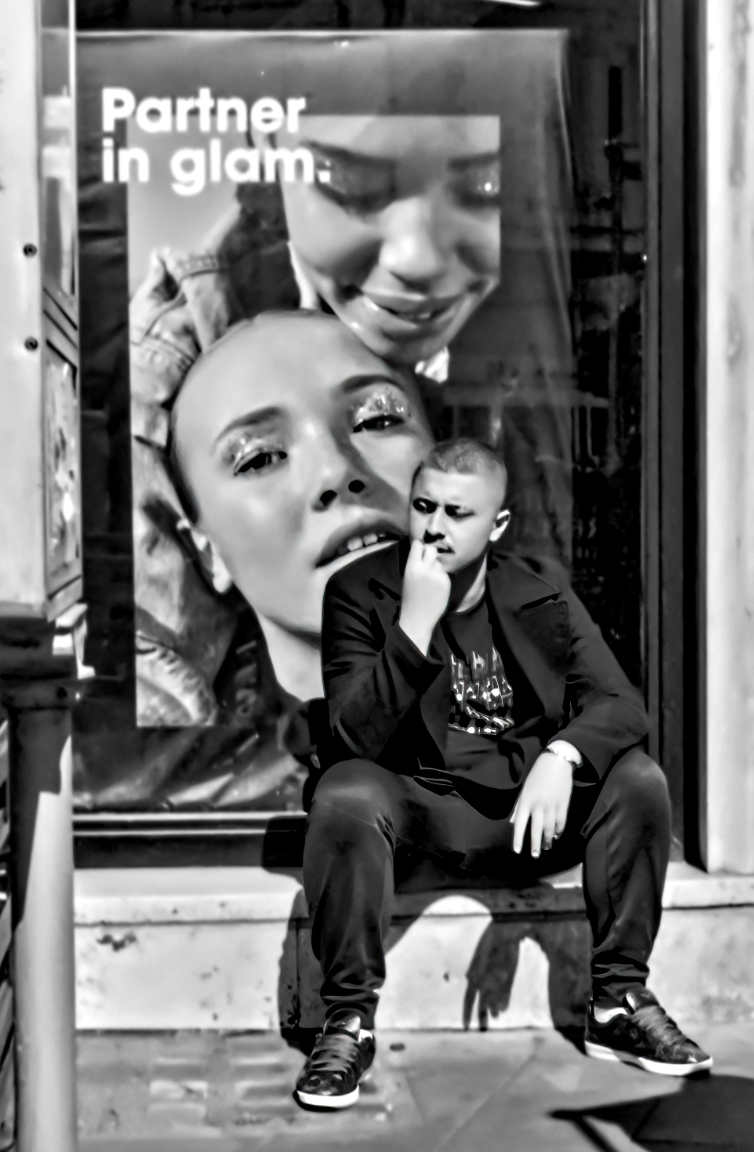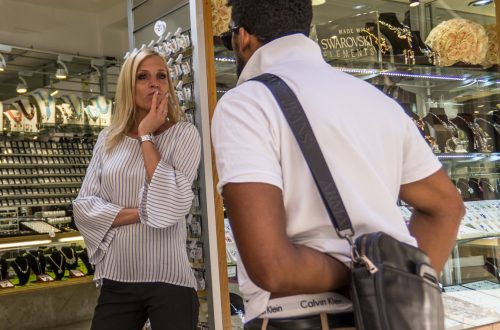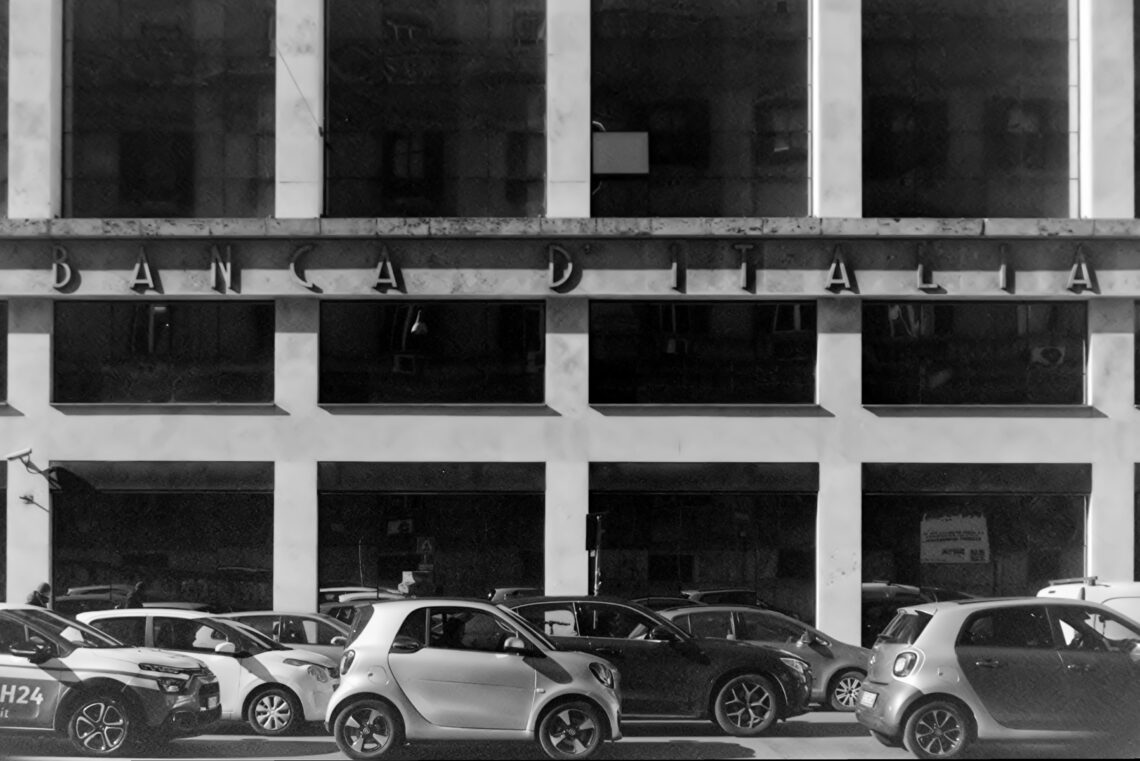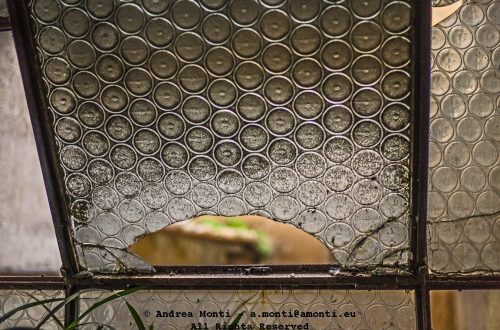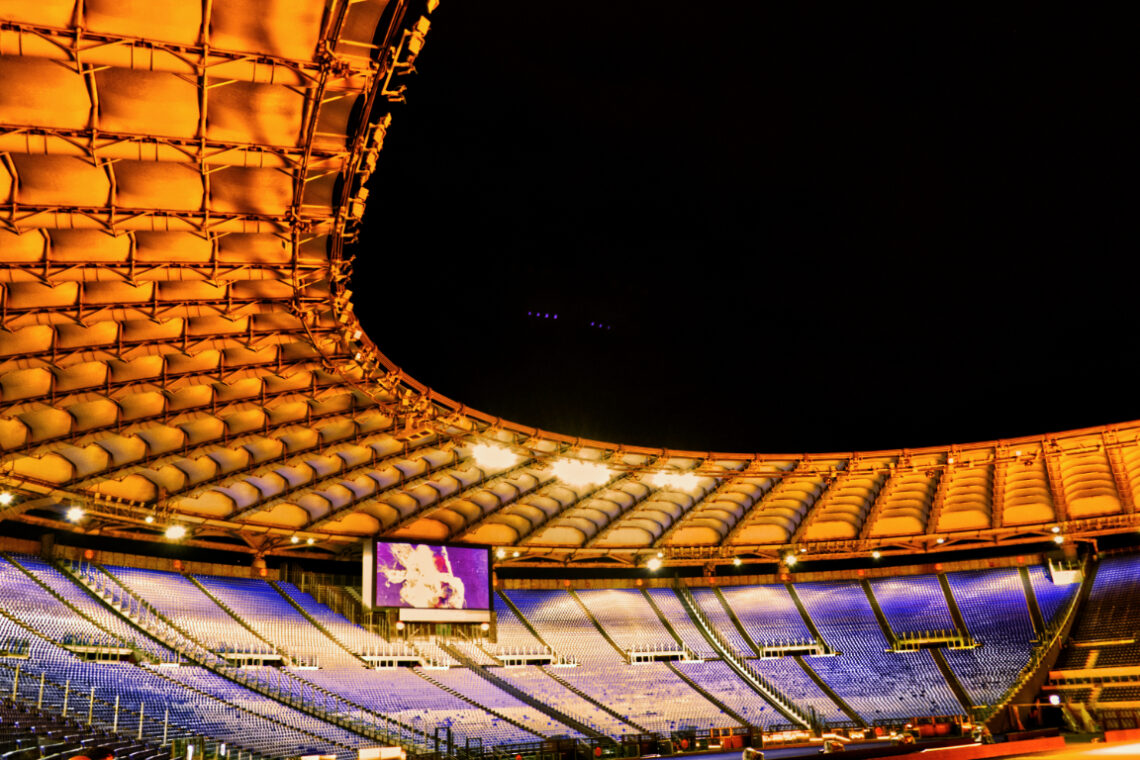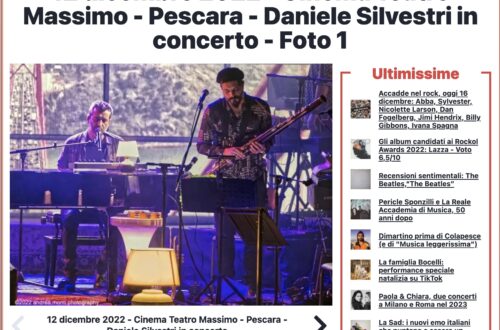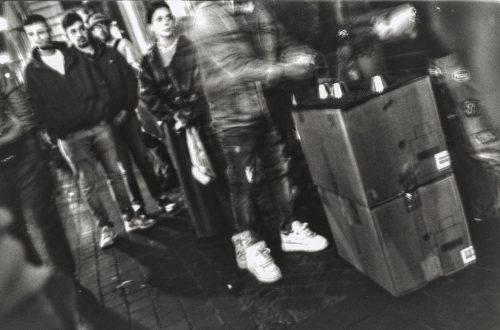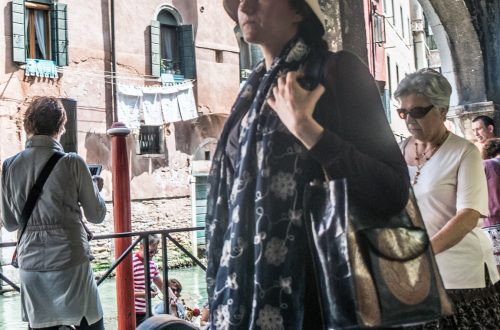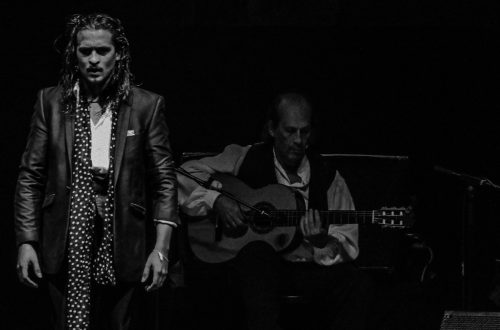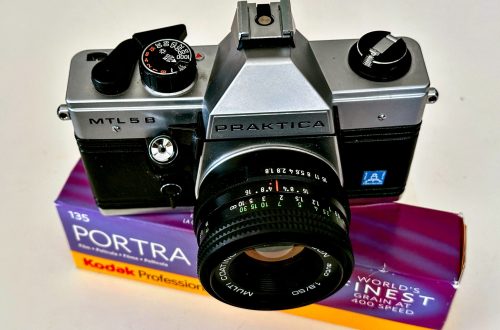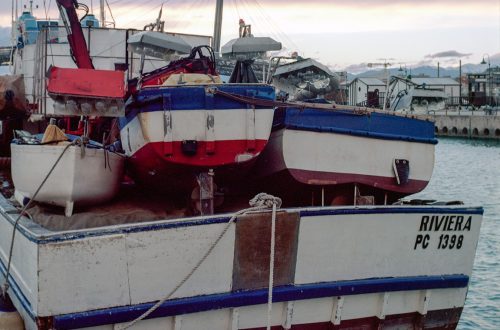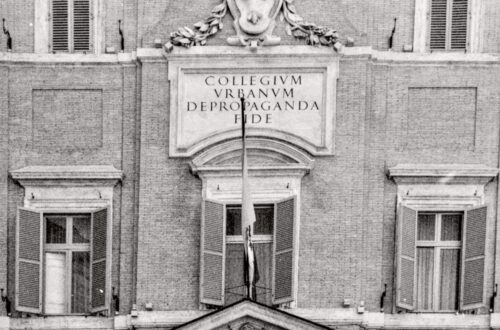-
Three-Card Monte in Rome
Every now and then, Three-Card Monte scammers appear in unexpected places such as the narrow cobblestone streets between the Parliament and the Pantheon, in the centre of Rome. This was a textbook execution. The game was fast-paced. Hooks pretended to be casual passers-by and traded 50-euro banknotes as if they were Monopoly money, hoping to lure victims into bidding. A muscle was monitoring the scene, ready to intervene at the first sign of trouble. I tried posing as a casual observer, but there was a high risk of being spotted and confronted by the unfriendly lad at my left, so I was unable to set up a properly composed shot…
-
What Souvenirs Say About Rome (and Your Attitude Toward Life)
Rome’s souvenir shops are full of busts, plaques and other artefacts mixing the sacre and the profane —and sometimes even things that have nothing to do with the Eternal City. This make it challenging for a tourist to actually understand what he is looking at —and googling for information is not a common practice among that kind of visitors who, as Aldous Huxely brilliantly pointed out, travel without knowing exactly why they are visiting a certain place or another. Nevertheless, these souvenir displays offer an insight into some of the most fascinating aspects of Rome’s culture and history – Initially published on 35mmc.com. On the top shelf, a plaque shows Latin…
-
On Detachment. Or ‘If You Love Something, Set It Free’ (cit. Sting)
A number of philosophies and religions preach the virtue of detachment from things as a path to enlightenment. When applied to gear, this advice won’t only save your soul —if you believe there’s one— but also your money and, last but not least, your photograph experience. This means avoiding the development of ‘feelings’ towards a camera or a lens that shift from appreciating their value as a tool to some sort of ‘personal engagement’. Initially published on 35mmc.com As odd as it sounds, such an attitude towards an inanimate object is more frequent than one may imagine. A paradigmatic case is the attachment of AIBO’s owners to their robotic pets:…
-
Sting of the Vespa
Vespa, in Italian, is not only the name of the stingy and frightening wasp. The word also identifies one of the world’s most famous examples of industrial design, dating back to 1946, and made internationally famous by the 1953 Hollywood motion picture Roman Holiday, starring Audrey Hepburn and Gregory Peck. Initially published on 35mmc.com The creator of this iconic scooter — an example of a perfect blend of ingenuity, style and appeal — was Corradino D’Ascanio. An aeronautical engineer from my home region, Abruzzo, he also designed and built the first helicopter, whose first test flight took place in the city of Pescara, a town near Popoli, a small village in…
-
5 Frames with various cameras – Ferrari On The Road(s)
Sports car photography usually happens in specific settings such as motorshows, official events, race tracks etc., where lights, crowds, fences and limited access to restricted areas are an issue. Doing the same on the street, however, is no less challenging as things happen unpredictably and, unless taking photograph of parked vehicles, there is no time to compose – Initially published on 35mmc.com In this photograph of a Ferrari F8 Tributo, the framing makes the car the focal point, and even though the door on the left adds a bit of visual clutter, it doesn’t detract from the overall result. The following image illustrate the trade-offs of reacting in real time…
-
5 frames with a Voigtländer Bessa R2, a Nokton 35/1,4 and a roll of an expired Kodak Portra 160
Tevere, the river that divides Rome in two, is one of my favourite places. No matter how much chaos there is in the ‘high places’: walking along the banks of the river puts you in another dimension, where time has no meaning and the pace slows down – Initially published on 35mmc.com Anchored boats stand still, in stark contrast to the fast-moving streets, crowded with cars, bicycles, pedestrians and tourists who have returned in droves once the pandemic is over. This is obviously a mirror image, but it looks as if it has been projected onto a digital screen. And here is what was mirrored: There are a lot of…
-
5 frames with the (much awaited) Ferrania P33, a Nikon F3 and a Nikkor 50 F2
I managed to grab a few rolls of the very first batch of Ferrania’s brand new P33 film, so I wasted no time in putting it to work with a Nikon F3 and the glorious Nikkor 50 f2. I won’t go into the technical details of this film, firstly because I can’t claim to be an authority on the subject, and secondly because Ferrania’s website has plenty of information. There is only one thing to know: the canister is not DX-coded, so shooting is only possible in full manual mode. This may change in the future, but for now this is the state of the art. Finally, a transparency note:…
-
A Hellish Look
It is quite common these days to see images of various kinds using the facade of a building as a screen. In the case of government or state buildings, a flag appears out of nowhere after dusk.The overall effect is quite spectacular, especially in Italy where the palaces of power are beautiful works of art. However, when photographed with a narrow field of view, the result can be disturbing, as in this case, where the building looks more like some sort of hell embassy.It wouldn’t be strange, though: doesn’t the Pope live on the other side of the Tevere River?
-
5 (improbable) Frames with a roll of Ferrania Orto and a Nikon 35TI
The photographer is a peculiar type of social being, characterised by a ‘rules are meant to be broken’ attitude in the search for the perfect exposure. So, sooner or later, all the dogmas about composition, hyperfocal, zone system, rule of thirds, etc. will be put aside to try something ‘different’. This is what happened with these five images, taken at night in Piazza Venezia and Via Salaria in Rome with a Ferrania Orto on a Nikon 35TI; a rather strange choice given the inherent limitations of an orthocromatic film and a 2,8 35mm lens of a compact camera in this scenario. Against all odds the 35TI performed well (especially in…
-
Iphone 15 Billboard in Via XX Settembre
This is an attempt to exploit the limitations of an orthocromatic film. Shadows and highlights were deliberately pushed, as was the contrast. This isn’t about the billboard. Not really. Yes, there’s a giant child smiling over Rome, her face stretched across several metres of vinyl, captured “with an iPhone 15,” if we’re to believe the tagline. She’s luminous, playful, part of a campaign you’ve probably already seen before you’ve even looked at it. But the photograph is something else. This was shot on orthocromatic film—intentionally. Shadows are carved in deeper than they should be. Highlights flare and collapse detail. The tonal scale isn’t flattering, and it isn’t faithful. It’s limited.…
-
An Antique Shop in via Cadorna
I made this frame with a Bessa R2 paired to a Nokton Classic 35mm f/1.4, loaded with Kodak Tri-X 400. That combination has a way of imposing its character on an image, and here it played straight into the atmosphere of the scene. The urn in the foreground caught my attention first, its surface worn and flaking, the sort of texture that Tri-X renders with a quiet authority. Its reflection in the shop window doubled the presence without turning the composition into a perfect mirror—imperfections in the glass kept it alive. The rust-speckled lamp leans towards it, both physically and compositionally, as though curious about the object’s past. I exposed…
-
A jam in via Alessandria
Taking pictures with a fully manual camera is a way to keep practising the basics. Honestly, I would not use a film camera for a professional assignment —at least, not as the main one— but it’s worth doing it in a less challenging condition.As per the technicalities, waiting for the next batch of Ferrania Orto to arrive, I resorted to a Kodak Tri-X 400 roll, which is my favourite film at these ISOs.
-
The Expired Film Series – Episode 2 – Ilford XP2Super 400 – Nov. 2017 shot in May 2023
This is the second episode in a series documenting the use of expired film in various contexts (mainly in Rome, Italy). Episode 2 features an Ilford XP2Super 400 shot with a Voigtlander Bessa R2 and a Voigtlander Nokton 35/1,4 in Rome (IT), between Colle del Quirinale and Piazza di Montecitorio. Also in this case, but this time by mistake, film’s ISO and the exposure compensation were not adapted to allow more light to impress the film. Once again, the blacks lack detail and show severe grain.
-
The Expired Film Series – Episode 1 – Kodak BW400CN – Dec. 2014 shot in June 2023
This is the first episode in a series documenting the use of expired film in various contexts (mainly in Rome, Italy). Episode 1 features a Kodak BW400CN shot with a Nikon 35TI in Rome (IT), between Piazzale Flaminio and Piazza di Spagna where the world premiere of the latest Tom Cruise motion picture —Mission Impossible: Dead Reckoning— was going to be held. As the Nikon 35TI does not allow one to ‘pull’ film’s ISO and the exposure compensation did not work, it was impossible to overexpose the pictures. As a results, the blacks lack detail and show severe grain. Legal Notice Reuse is free for pro bono personal and educational…
-
Content Creators
There are many reasons for the lack of details in this image.The main one is that this roll of Kodak BW400CN expired about 15 years ago. Secondly, the Nikon 35TI used for the shot was set to ‘P’ mode, which does not allow ISO to be changed, and exposure compensation is broken: this made it impossible to use longer exposure times, as it would have been necessary.
-
Masters of Propaganda
In the heart of Rome, unbeknownst to the horde of tourists heading for Trinità dei Monti and the Fontana della Barcaccia, hidden in plain sight lies silent the headquarter of the Congregazione de propganda fide, the ante litteram master of modern propaganda.
-
Guarding Democracy
Shot on film, this frame came from a day of walking — not searching, just watching. I didn’t need to look far. Two officers, positioned under a temporary gazebo, leaned into casual conversation, framed by the barricade they were meant to man. Beyond them, a crowd gathered in orderly concentration. The juxtaposition wasn’t loud, but it was clear: authority in the foreground, public in the distance. The separation was both literal and symbolic. The choice to shoot from behind the barrier wasn’t just compositional — it was contextual. I wanted to keep the divide intact. The vertical bars bisecting the two officers are rigid, unforgiving. They draw the eye down,…
-
Partner in Glam
I framed this shot fast — the kind of street moment that gives you three seconds to get it or lose it. What pulled me in wasn’t the man alone, nor the advert behind him. It was the convergence. His physical presence, heavy and brooding, intersecting perfectly with the oversized face of the model. Two expressions, one contemplative, one seductive, unintentionally in conversation. The poster reads Partner in glam. A marketing line, forgettable in most contexts. But set against this man, seated in shadow, caught mid-thought, it takes on irony. Or honesty. Depends how you read it. Technically, the photo leans hard into contrast. Shot in direct sunlight, the shadows…
-
Processing DSLR-digitized film with and without Pentax K-1 Monochrome Custom Image profile
Digital Camera Utility 5.0 is a pain to use on a Mac with Monterey. It is slow and laggy. Its only use is to get the photo as shot, with the custom image profiles embedded in a K-1 (and other recent Pentax DSLRs), and export it as a 16-bit tiff for further processing.One might wonder, however, whether editing a RAW file without going through the DCU —and thus losing the custom image profile— would produce lower quality results. We are about to find out.The test is quite demanding, as it starts with a shot from an Ilford SP2 Super 400 (note: this is not a true B&W film, as it…
-
A Frame Within a Frame Within a Frame
The irony didn’t hit me until I developed the roll—an expired Ilford XP2 Super 400 that had been lounging at the bottom of a drawer for years. Shot with a Voigtländer Bessa R2 paired with the Nokton 35mm f/1.4, this image is as much a meditation on layers as it is a commentary on isolation. What initially looked like an ordinary street shot—girl on a call, perched on a windowsill—turned out to be a trifecta of enclosures: her physical pose wrapped in posture and winter clothing, set within the architecture of the window, itself encased in the framing of the building. Beyond, the city reflects itself, ghostlike, on the glass—another…
-
Stadio Olimpico, seen from Tribuna Monte Mario
The Stadio Olimpico is not an easy subject to photograph, especially when seen from the lofty and privileged perch of the Tribuna Monte Mario. The vantage point offers grandeur, but grandeur doesn’t always translate easily into pixels—especially under the kind of merciless lighting that the stadium seems to favour at night. From this spot, the sweeping geometry of the roof dominates the composition. Its repeating, honeycomb-like pattern glows under the sodium vapour lights, casting a heavy golden hue that floods the upper half of the frame. Below, the seating—empty and rendered in cool blues—acts as a counterweight, both in tone and texture. The effect is a split visual dialogue between…
-
Red Fan
-
Still Ruling The Empire
The statue in this image has its back turned to the camera, but it commands the frame entirely. Shot in Rome, with the dome of Santi Luca e Martina on the left and the Torre delle Milizie rising in the distance, this bronze figure—likely an emperor or general—stands as if still governing the landscape before him. I didn’t photograph the face on purpose. The power of this moment lies in presence, not identity. The shot is about line, volume, and the compression of history into layers. The trunk of the umbrella pine rises behind him like a sceptre made of wood and air, while the palatial facades blend architectural periods…
-
Get Ready, Set, Go
I’ve always enjoyed the way a single moment in the street can hold multiple narratives at once. In this frame, taken in Piazza Venezia with the Vittoriano looming behind, the cyclist seems caught between pause and motion — a split-second where the decision to push forward hasn’t yet been made. The backlighting was a gamble. Shooting into the sun with the Fuji X-T3 and the XF 16-80 meant dealing with inevitable flare, lowered contrast, and the risk of losing detail in the shadows. But I wanted that shaft of light breaking through, almost theatrical in how it picks out the rider against the cobblestones. Exposure was a compromise: holding the…

